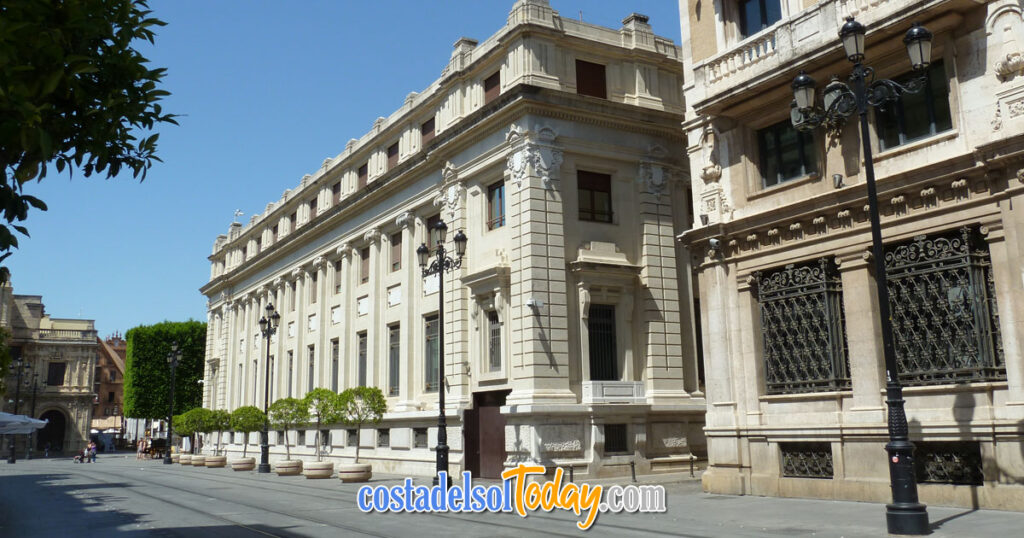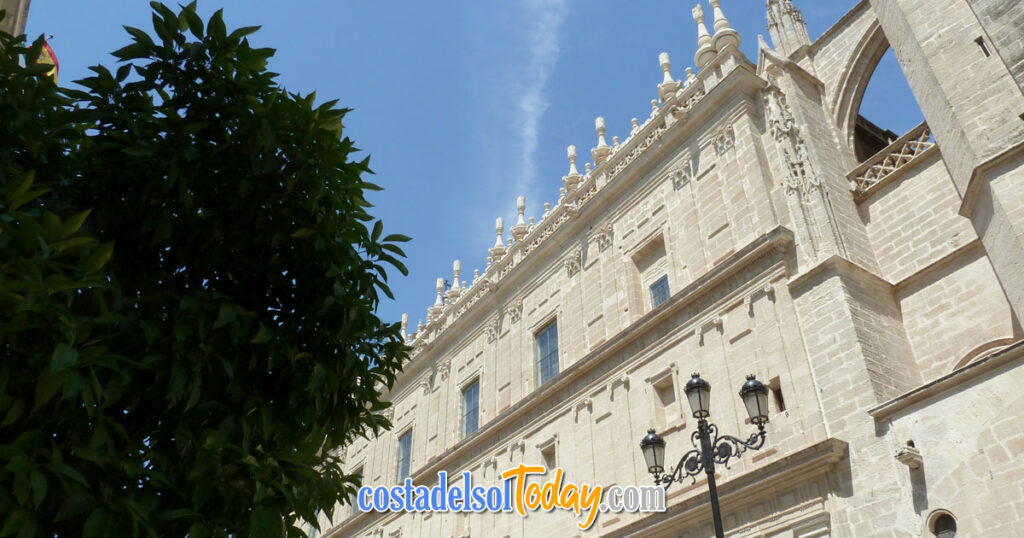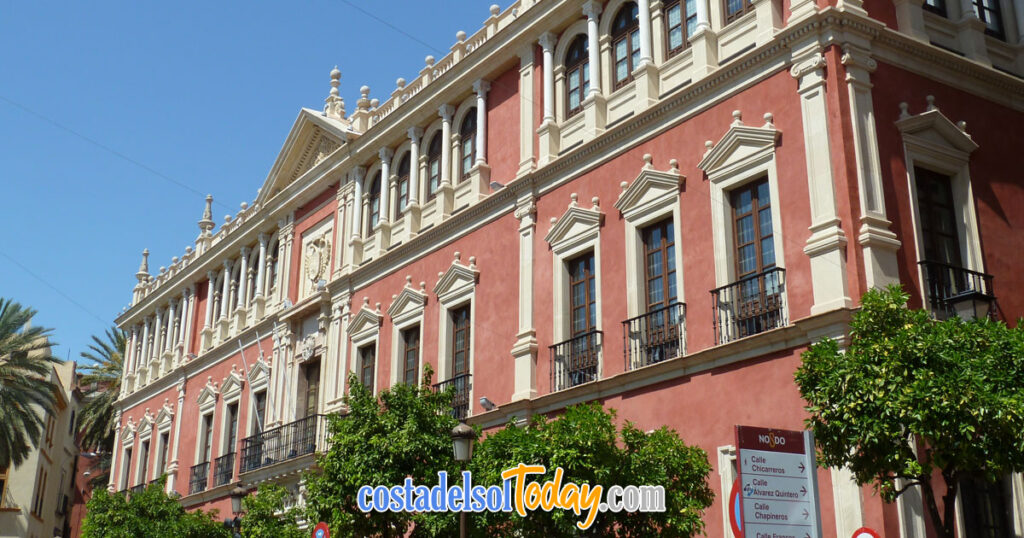Seville, my favourite city in Spain (second is Valencia). It has such a confident buzz and a great mix of stunning old and stunning new. The capital of southern Spain’s Andalusia region, Seville is famous for flamenco dancing, especially in its Triana neighborhood.

Seville
Seville is well known for its vibrancy, and the city itself is characterized by its vitality, while the Sevillians are known for their wit and glamour. Seville was founded by Hercules and its origins are linked to the Tartessian civilization, but it is known for all its important monuments and its fascinating history. The Moors named it Hispalis after the Isbiliya of the Romans and it was the climax of their history when wealth poured into the New World.
Seville is located on the banks of the Guadalquivir and has one of the largest historical centers in Europe. The city is the capital of Andalusia and hosts a number of important cultural institutions, such as the National Museum of Spain, the Spanish Academy of Sciences and the University of Seville. There are many monuments in the city, as well as many museums and galleries, but the most important monuments are the Indian Archives, where historical records of discoveries in America are kept.
A huge baroque chariot follows a long procession, on which sits an image of the Virgin Mary, surrounded by adoring crowds. This walk is a classic image of Seville: men roam the streets on their noble horses and women dance in colourful gypsy dresses. The Sevillians were great actors and put on an extraordinary show in specially erected tents.
This large 16th century mansion combines Gothic and Renaissance in a harmonious setting with lush courtyards and gardens. Cross the Triana Bridge over the Guadalquivir River and enter the city centre, where one of the world’s most popular tourist attractions is located. The spring events in March and late April are worth a visit, but in Seville you should visit all of them. Other attractions in the capital of Spain’s second largest city include the Royal Palace of Seville, the National Museum of Natural History and a number of museums and galleries.
I’ve spent a few nights sat in front of a café with a bottle of Ribera and some ham/cheese/olive tapas. Just in front of the main gate to the Cathedral, one of those places with water sprays. Really nice atmosphere. Seville is my favourite city in Spain. Valencia is second.
This is the Royal Alcázars of Seville a great example of Moorish architecture. pic.twitter.com/UIgSlQA1uF
— Graeme Ambrose🌹 (@GraemeAmbrose) December 21, 2020
An Historic Cultural City
Seville, which is famous throughout the world, is home to some of Spain’s most important cultural and religious institutions, such as the National Natural History Museum. Located at the bottom of a 70-kilometre-long sea, it is the most densely populated province in Spain and served as a privileged destination for trade with the West Indies. The towns on the banks of this river are living witnesses of the rich history and cultural heritage of their inhabitants, and the art and folklore make them an exceptional tourist destination.
It borders the Mediterranean and Atlantic Ocean and houses some of Spain’s most important cultural and religious institutions, such as the National Natural History Museum.
Seville Weather
It’s hot. In the Summer, it’s unbearably hot. Seville has a Mediterranean climate featuring very hot, dry summers and mild winters with moderate rainfall. Like most Mediterranean climates, the city is drier during summers and wetter during winters. The annual average temperature is 25.4 °C (78 °F) during the day and 13 °C (55 °F) at night.
Seville Oranges
Known since mythological times, the orange appears in the Garden of Hesperides with Hercules heist of the “Golden Apple” . In the Olimpia, Hercules is described receiving from Atlas the mentioned fruits. Testimony of this is the front frieze of Zeus Temple. Now the Golden Apples were located somewhere along the mediterranean sea.
Seville Cathederal
The Cathedral of Saint Mary of the See, better known as Seville Cathedral, is a Roman Catholic cathedral in Seville, Andalusia, Spain. It was registered in 1987 by UNESCO as a World Heritage Site, along with the adjoining Alcázar palace complex and the General Archive of the Indies.
Some History
When the Phoenicians and Tarteses settled in Seville, the surrounding land and its proximity to the Mediterranean facilitated the development of agriculture, trade and trade routes between Europe and the Middle East.
Founded by Julius Caesar, the settlement of Julia Romula Hispalis was a centre of spectacular trade activity. The Arabs have left an indelible mark on the culture and monuments of the country and important settlements have been built, some of which can still be seen as buildings or monuments.
In the 16th century Seville flourished and the Enlightenment brought a revival of trade, agriculture and industry. The port of Seville received goods from the precious metals of the New World, which contributed to the development of Western Europe. The 1992 World Exposition further strengthened the reputation of the city and strengthened its status as a major centre of international trade and commerce in the Middle East.
The province of Seville is a mosaic of cultures rooted in the distant past, with a multitude of ethnic groups, religions, cultures, languages and ethnic groups from all over the world.
Travel Around Seville
The Spanish railway company Renfe connects the city with the rest of Spain and other parts of the country. Seville is home to a number of popular tourist attractions, such as the National Museum of Spanish Culture and the Spanish National Park. Discovering Spanish culture, whoever embarks on this journey will be rewarded with a great experience that is perfect for his first visit to Spain.
Let us conclude with some of the best places to visit, such as the National Museum of Spanish Culture and the Spanish National Park. Whatever your itinerary for your trip, then enjoy all that this wonderful Spanish city has to offer and behave like yourself.
A great addition to Seville city centre is the tram that goes from Plaza Nueva to San Bernardo. The bus ride from Seville to Cadiz takes about two hours each way, making it a relatively simple city to visit as a day trip. If you are looking for a cheap and reliable way to get to Seville, you can take a bus from Cádiz that will take you no longer than 6 hours and then take you back in less than an hour.
A good option for your fourth day in Seville is a day trip to Cordoba, which you can reach in just 40 minutes by train. If it is part of your trip in Andalusia, it is a good way to get to your destination by bus.
Flamenco music and dance are an important aspect of southern Spanish culture, and the Flamenco Museum in Seville is a great way to learn more about it. If you are looking for evening activities in Seville or romantic activities in Seville, you should put a flamenco performance on your itinerary. Authentic and passionate flamenco shows are one of the top things I do every night and still do.
The best things to see in Seville are the Royal Alcazars of Seville, also called Moors – designed royal palaces. This UNESCO World Heritage Site is certainly one of the best things to do in Seville, as it was the foundation of the Spanish royal family, which still uses it as their official residence. The wooden structure is the most modern I have seen in all of Seville, Spain.
It’s just outside Seville, Spain, and there’s a place that so many have no idea exists unless you’re a dice fan, of course – a hard Game of Thrones fan. This picturesque town has a tempting mix of the most delicious tapas in southern Spain. With its good food, beautiful architecture and a wide variety of attractions, it has made a name for itself as one of the most popular tourist destinations in Spain.
Seville is the capital of the central region of Andalusia, but you can also travel to other places very easily. The cathedral is gigantic and very nice to visit, especially when practically nobody is there for the fair. You could easily spend a whole day in the real Alcazar or, if you don’t have time, go to the Seville Cathedral and visit it. If you are visiting Seville for the first time and would rather follow the other attractions of the city such as the National Museum of Spanish Culture and the Spanish National Park, the Barrio Santa Cruz is the best area for your stay in Seville, although there are many other good places in other parts of the city.
If you are in Seville in April and want to experience the city and the local culture, Ferria de Abril is one of the best things to do in the city. Here is something that will guarantee you both the number of good things you can do while you’re at work and the next day’s start. It has just opened and is therefore a great place for a family outing.




An amazing city. We visit whenever we can.